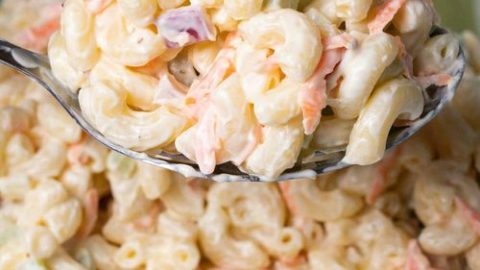Stuffed cabbage rolls are a timeless classic that transcends cultures and cuisines. Known for their rich flavors and satisfying textures, these delectable bundles of goodness are loved by people worldwide. Whether you’re seeking comfort on a chilly evening or preparing a memorable meal for family and friends, stuffed cabbage rolls are an ideal choice. In this blog post, we’ll delve into the art of making stuffed cabbage rolls, sharing everything from traditional recipes to creative variations that cater to different tastes and preferences.
The History and Origins of Stuffed Cabbage Rolls
Stuffed cabbage rolls have a rich history that spans multiple cultures and regions. While the exact origin of this dish is debated, it is widely believed to have Eastern European roots, with variations appearing in countries like Poland, Ukraine, Hungary, and Romania. However, stuffed cabbage rolls are also a staple in Middle Eastern and Asian cuisines, highlighting the dish’s versatility and widespread appeal.
Eastern European Tradition
In Eastern Europe, stuffed cabbage rolls are often associated with family gatherings and festive occasions. The dish is known as “golabki” in Polish, “sarma” in Serbian, and “sarmale” in Romanian, to name a few. Each culture has its own unique twist, with variations in fillings, seasonings, and sauces.
Middle Eastern Influence
In the Middle East, stuffed cabbage rolls are called “malfouf” and are typically prepared with fragrant spices and herbs, offering a more aromatic experience. This version often includes ingredients such as cumin, cinnamon, and allspice, adding a warm, rich flavor to the dish.
Asian Adaptations
Asian cuisines have also embraced stuffed cabbage rolls, with variations appearing in Chinese and Korean cooking. These versions often feature ingredients like ginger, soy sauce, and sesame oil, infusing the rolls with bold flavors that complement the mild cabbage leaves.
Why Stuffed Cabbage Rolls Are a Must-Try Dish
Stuffed cabbage rolls are a culinary delight that combines comfort, flavor, and nutrition in one package. Here’s why this dish is worth trying:
- Nutrient-Packed: Cabbage is a highly nutritious vegetable rich in vitamins C and K, fiber, and antioxidants. Combined with protein-rich fillings, stuffed cabbage rolls offer a well-rounded meal.
- Budget-Friendly: Using simple, affordable ingredients, this dish is economical, making it accessible for home cooks on a budget.
- Versatile Fillings: Whether you prefer traditional meat fillings or vegetarian and vegan alternatives, stuffed cabbage rolls can be tailored to suit your taste and dietary preferences.
- Make-Ahead Option: Stuffed cabbage rolls can be prepared in advance and reheated, making them perfect for busy weeknights or entertaining guests.
- Crowd-Pleaser: Their comforting flavors and appealing presentation make stuffed cabbage rolls a hit with diners of all ages.
Kitchen Equipment Needed
Before we dive into the recipe, let’s ensure you have all the necessary kitchen tools to create perfect stuffed cabbage rolls:
- Large Pot: For blanching cabbage leaves.
- Sharp Knife: To core the cabbage and chop ingredients.
- Cutting Board: A stable surface for preparation.
- Mixing Bowls: To combine filling ingredients.
- Large Baking Dish or Casserole Dish: For baking the stuffed cabbage rolls.
- Spoon or Tongs: To handle hot cabbage leaves.
- Aluminum Foil: To cover the baking dish while cooking.
Ingredients for Stuffed Cabbage Rolls
Here are the ingredients you’ll need to make delicious stuffed cabbage rolls:
For the Cabbage Rolls:
- 1 Large Head of Cabbage: Preferably green cabbage, for wrapping the filling.
- 1 Pound Ground Beef (or Pork, Turkey, or Chicken): For the filling, you can choose your preferred meat or a combination.
- 1 Cup Cooked Rice: Adds texture and bulk to the filling.
- 1 Medium Onion, Finely Chopped: For flavor and aroma.
- 2 Cloves Garlic, Minced: Adds depth to the filling.
- 1 Egg: Helps bind the filling ingredients.
- 1 Teaspoon Salt: For seasoning.
- ½ Teaspoon Black Pepper: For a mild kick.
- 1 Teaspoon Paprika: Adds color and flavor.
- 2 Tablespoons Fresh Parsley, Chopped: For garnish and flavor.
For the Tomato Sauce:
- 2 Cups Tomato Sauce or Crushed Tomatoes: Forms the base of the sauce.
- 1 Tablespoon Olive Oil: For sautéing the onions.
- 1 Medium Onion, Finely Chopped: Adds sweetness and flavor to the sauce.
- 1 Tablespoon Sugar: Balances the acidity of the tomatoes.
- 1 Teaspoon Dried Oregano: For a hint of herbaceous flavor.
- 1 Teaspoon Dried Basil: Complements the tomato sauce.
- Salt and Pepper to Taste: For seasoning.





